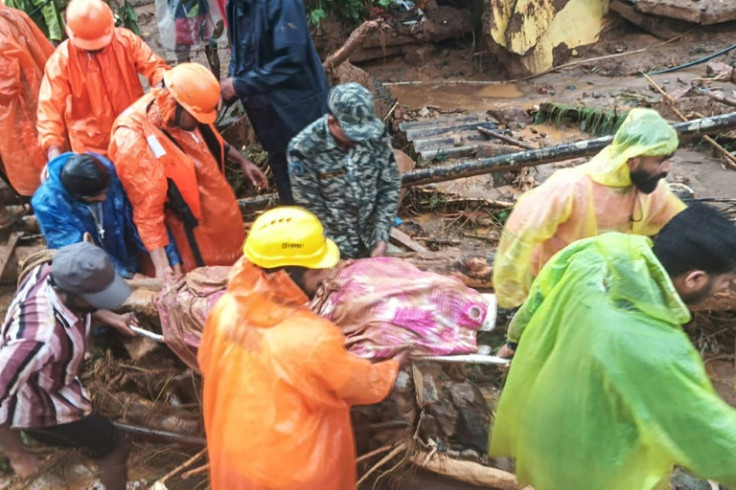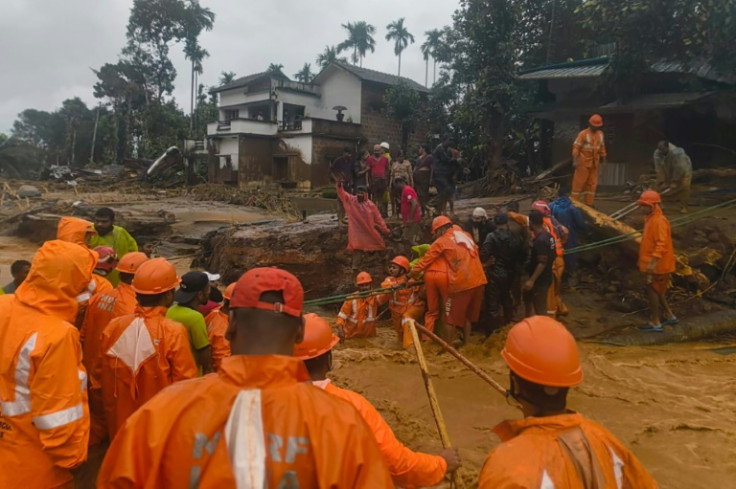63 Dead After Landslides Strike India Tea Estates

Landslides in India triggered by pounding monsoon rains struck tea plantations and killed at least 63 people Tuesday with at least 250 others rescued from mud and debris, officials said.
The southern coastal state of Kerala has been battered by torrential downpours, with blocked roads into the disaster area at Wayanad district complicating relief efforts.
State revenue minister K. Rajan's office confirmed the toll to reporters. District official D.R. Meghasree told reporters that another 125 people were in hospital for treatment.
"My thoughts are with all those who have lost their loved ones and prayers with those injured," Prime Minister Narendra Modi said in a post on social media platform X.
Wayanad is famed for the tea estates criss-crossing its hilly countryside which rely on a large pool of casual labourers for planting and harvest.
A district official, speaking to AFP on condition of anonymity, said that several estates in the district were hit.
Images published by the National Disaster Response Force showed rescue crews trudging through mud to search for survivors and carry bodies on stretchers out of the area.
Homes were caked with brown sludge as the force of the landslide's impact scattered cars, corrugated iron and other debris around the disaster site.
India's army said it had deployed more than 200 soldiers to the area to assist state security forces and fire crews in search and rescue efforts.
Kerala state excise minister M.B. Rajesh said more than 250 people in total had been rescued so far, The Hindu newspaper reported.
Modi's office said families of victims would be given a compensation payment of $2,400 (200,000 rupees).
More rainfall and strong winds were forecast in Kerala on Tuesday, the state's disaster management agency said.
Indian opposition leader Rahul Gandhi, who until recently represented Wayanad in parliament, told lawmakers that the scope of the devastation was "heartbreaking".
"Our country has witnessed an alarming rise in landslides in recent years," he added. "The need of the hour is a comprehensive action plan to address the growing frequency of natural calamities."
Monsoon rains across the region from June to September offer respite from the summer heat and are crucial to replenishing water supplies.
They are vital for agriculture and therefore the livelihoods of millions of farmers and food security for South Asia's nearly two billion people.
But they also bring destruction in the form of landslides and floods.
The number of fatal floods and landslides has increased in recent years, and experts say climate change is exacerbating the problem.
Damming, deforestation and development projects in India have also exacerbated the human toll.
Intense monsoon storms battered India earlier this month, flooding parts of the financial capital Mumbai, while lightning in the eastern state of Bihar killed at least 10 people.
Nearly 500 people were killed around Kerala in 2018 during the worst flooding to hit the state in almost a century.
India's worst landslide in recent decades was in 1998, when rockfall triggered by heavy monsoon rains killed at least 220 people and completely buried the tiny village of Malpa in the Himalayas.


© Copyright AFP 2025. All rights reserved.





















